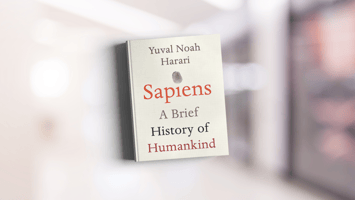En nuestra pasada edición de Teachers´ Corner, compartimos la primera experiencia From peer to...
From peer to peer by Milo
Milo, a second-year student who has just finished his internship at Kel, shares his great review of H.P. Lovecraft: The Peak of Horror.
Howard Phillips Lovecraft was an American writer known for his science-fiction/horror works. He is known for his contributions to the cosmic horror genre, a special sub-genre of horror dedicated to the unknown, forbidden knowledge, and godlike monsters.
Lovecraft didn’t write many books compared to most of the authors of his level of fame. His life was short and his writing was slow, but the few short stories he did end up publishing have reached international fame.
His most popular character is definitely Cthulhu. You may have heard of him – a huge creature with tentacles sprouting from his face, slimy green skin, and giant wings, who makes everyone who even looks at him go mad with horror. The Call of Cthulhu is Lovecraft’s most famous story, and within it, we can see the magic of Lovecraft’s writing.
Lovecraft’s particular style when writing horror has led to the creation of one of the most unique subgenres ever created in the history of writing – Cosmic horror. Usually, the villains or monsters in horror books are something the main characters must defeat or escape to have a happy ending. Serial killers, aliens, dolls, monsters, demons – these mortal creatures are common in the horror we know. It gives the reader a sense of control and hope that the main characters will eventually be able to defeat or escape this great evil.
However, the very definition of cosmic horror robs the reader of this hope and control. It is the fear of the unknowable, of the incomprehensible. It is the fear of our own weakness in the face of the infinity of the universe.
The first line of The Call of Cthulhu sums it up perfectly: “The most merciful thing in the world, I think, is the inability of the human mind to correlate all its contents. We live on a placid island of ignorance in the midst of black seas of infinity, and it was not meant that we should voyage far.” The fear that Lovecraft harnesses with his writing is the fear of irrelevance. Humans are nothing compared to infinity, to the universe, and Lovecraft’s omnipotent gods remind us of that. That is also why another name for cosmic horror is Lovecraftian horror.
With cosmic horror, there is no control, which is what makes it so good, and what makes it different from most other horror.
A few volumes of Lovecraft’s work are must-reads, full of his best horror stories for Halloween!
The Whisperer in Darkness (Volume 1)
- Dagon
- The Nameless City
- The Hound
- The Festival
- The Call of Cthulhu
- The Case of Charles Dexter Ward
- The Dunwich Horror
- The Whisperer in Darkness
- At the Mountains of Madness
The Horror in the Museum (Volume 2)
- The Green Meadow
- Poetry and the Gods
- The Crawling Chaos
- The Horror at Martin’s Beach
- Imprisoned with the Pharaohs
- Two Black Bottles
- The Thing in the Moonlight
- The Last Test
- The Curse of Yig
- The Electric Executioner
- The Mound
- Medusa’s Coil
- The Trap
- The Man of Stone
- The Horror in the Museum
- Winged Death
- Out of the Aeons
- The Horror in the Burying-Ground
- Till A’ The Seas
- The Disinternment
- The Diary of Alonzo Typer
- Within the Walls of Eryx
- The Night Ocean
Share this great review with your students!
We also recommend: The hunter of the dark (Volume 3) & The lurking fear (Volume 4).





